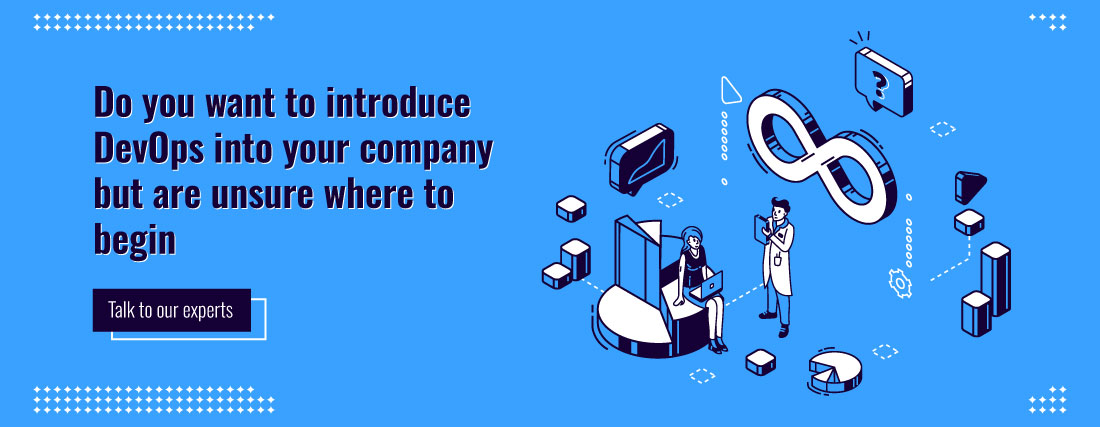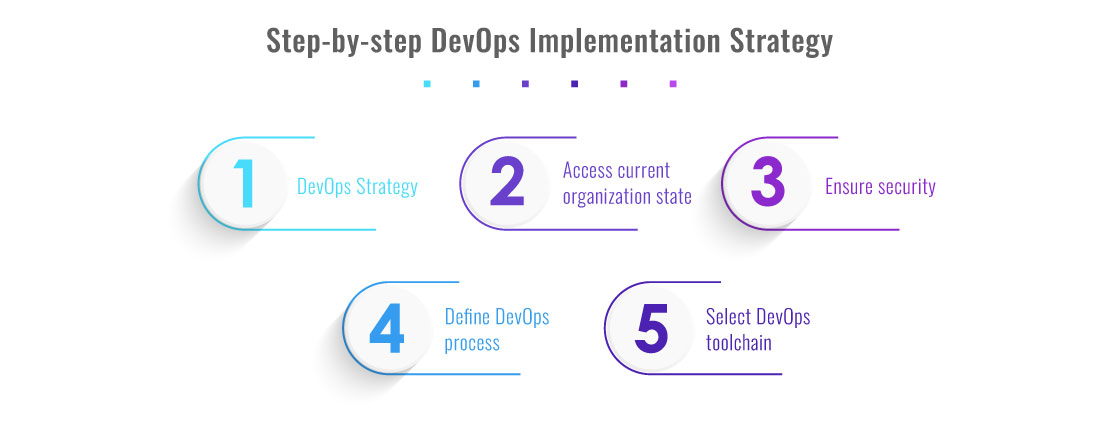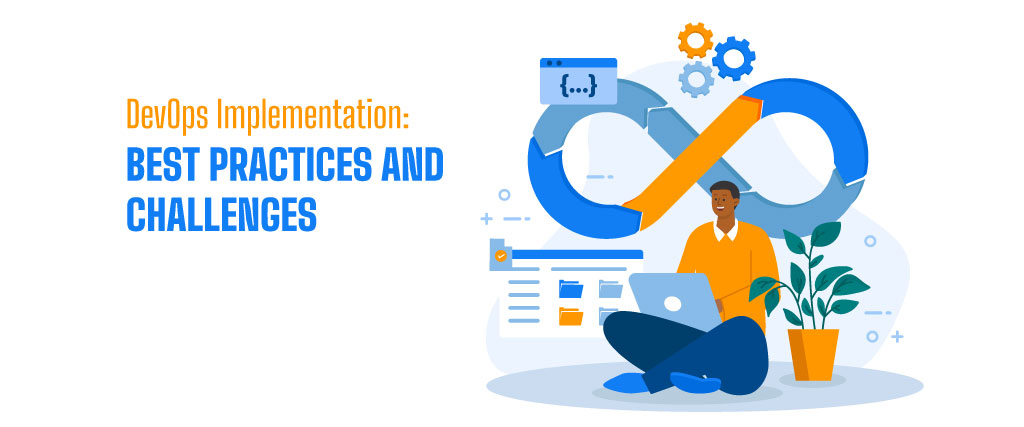Welcome to our in-depth exploration of DevOps Implementation. DevOps has become a game-changing strategy in the fast-moving world of software development to improve communication between development and operations teams, expedite time to market, and streamline the software delivery process.
Nevertheless, there are a number of best practices and difficulties associated with successfully implementing DevOps.
To help you effectively navigate the DevOps landscape, this blog will explore both of these aspects.

What is DevOps?
DevOps, which stands for “Development and Operations,” is a contemporary method of approaching IT operations and software development that aims to close the conventional divide between these two fields.
It is defined by an emphasis on automation and teamwork in a collection of cultural philosophies, practices, and principles.
The primary goal of DevOps is to automate repetitive processes like code building, testing, and deployment in order to streamline the software development lifecycle.
It also aims to foster a shared responsibility culture between the development and operations teams.
It promotes continuous integration and delivery (CI/CD) to enable more rapid and dependable software releases.
DevOps also encourages the use of microservices architecture and containerization for scalability and flexibility, as well as infrastructure as code (IaC) for provisioning and managing infrastructure.
DevOps relies heavily on security integration and real-time monitoring, which help teams quickly detect and fix problems.
DevOps essentially promotes a culture of cooperation, automation, and continuous improvement, which eventually results in software development and deployment procedures that are more dependable and efficient.

Best Practices for DevOps Implementation
1. Automation Everywhere:
Automation forms the bedrock of DevOps, serving as the engine that propels the software development and deployment processes forward.
It entails the systematic replacement of manual, repetitive tasks with automated workflows.
This automation covers a spectrum of activities, from code building to testing and deployment.
In practice, it means that developers no longer need to manually build and package their code, test it, or deploy it to various environments.
Instead, they rely on automated tools and scripts that perform these tasks efficiently and consistently.
2. Collaborative Culture:
Collaborative culture is one of the main cultural shifts that DevOps advocates.
This shift entails a shift in perspective and guiding principles in addition to the adoption of techniques and tools.
Traditionally separate development and operations teams are encouraged to work together and share responsibility.
The intention is to get rid of any barriers and silos that might have existed in the past.
3. Version Control:
Version control, a cornerstone of DevOps, is the systematic management of code changes through the use of version control systems such as Git.
This is necessary to manage various software versions, keep track of code history, and guarantee code consistency.
It improves the development process in a number of ways.
4. Infrastructure as Code (IaC):
Use IaC to automate, repeatable, and consistent infrastructure definition and provisioning. Commonly used tools include Ansible and Terraform.
5. Continuous Testing:
To identify problems early, automate testing at every stage of the pipeline.
Performance tests, integration tests, and unit tests are all included in this.
6. Monitoring and Feedback:
Keep an eye on infrastructure and applications in real time.
Utilize tools such as Prometheus, Grafana, and ELK stack to acquire insights and offer suggestions for enhancements.
7. Security Integration:
Incorporate security procedures into the pipeline used by DevOps. Conduct vulnerability analyses, security scans, and adherence to security best practices.
8. Microservices and Containers:
For increased scalability and flexibility, use containerization (such as Docker and Kubernetes) and microservices architecture.
9. Modest Adjustments:
Implement gradual, tiny adjustments to reduce the possibility of errors.
Use feature flags to switch between features without having to redeploy them.
Challenges in DevOps Implementation
● Cultural Resistance: It can be difficult to alter an organization’s culture in order to promote collaboration, particularly in established, compartmentalized settings.
● Tool Selection: Selecting the appropriate tools for monitoring, CI/CD, and automation can be challenging, and making the wrong tool choices can impede DevOps initiatives.
● Legacy Systems: Because legacy systems frequently lack the automation and flexibility needed, integrating DevOps practices with them can be challenging.
● Security Concerns: Although integrating security into the pipeline is essential, it can be difficult because of worries about compliance and vulnerabilities.
● Scalability and Complexity: Managing infrastructure and deployments can get complicated as applications grow and become more complex.
● DevOps Skills Gap: Obtaining and retaining qualified DevOps specialists is a typical difficulty for businesses.
● Constant Learning: The field of DevOps is always changing. Teams must remain current on emerging technologies and best practices.
FAQs
What are the core principles of DevOps?
Automation, cooperation, continuous delivery, integration, infrastructure as code, and a shared responsibility culture are among the fundamental tenets of DevOps.
What tools are commonly used in DevOps?
A few examples of DevOps tools are Terraform, Ansible, Jenkins, Git, Docker, Kubernetes, and monitoring programs like Grafana and Prometheus.
How does DevOps impact software development and IT operations teams?
By dismantling organizational silos and fostering a culture of cooperation and shared accountability, DevOps pushes these teams to collaborate.
What is the role of automation in DevOps?
DevOps is centered on automation. It expedites the software development and delivery process, lowers manual error rates, and automates repetitive tasks.
How does DevOps address security concerns?
DevOps integrates security practices, such as security scans, vulnerability assessments, and secure coding techniques, early in the development process.
Conclusion
A revolutionary method that can greatly enhance the software development and delivery process is DevOps.
But it takes a change in mindset, the appropriate equipment, and a dedication to automation, teamwork, and ongoing development.
Organizations can benefit from faster, more dependable software delivery by successfully implementing DevOps and addressing the best practices and challenges covered in this blog.
Are you prepared to transform software development and adopt the DevOps culture?
Put these best practices into practice to make the most of DevOps and guarantee quicker, more dependable software delivery.
Talk with our experts about this and stay ahead in the dynamic world of technology!
























